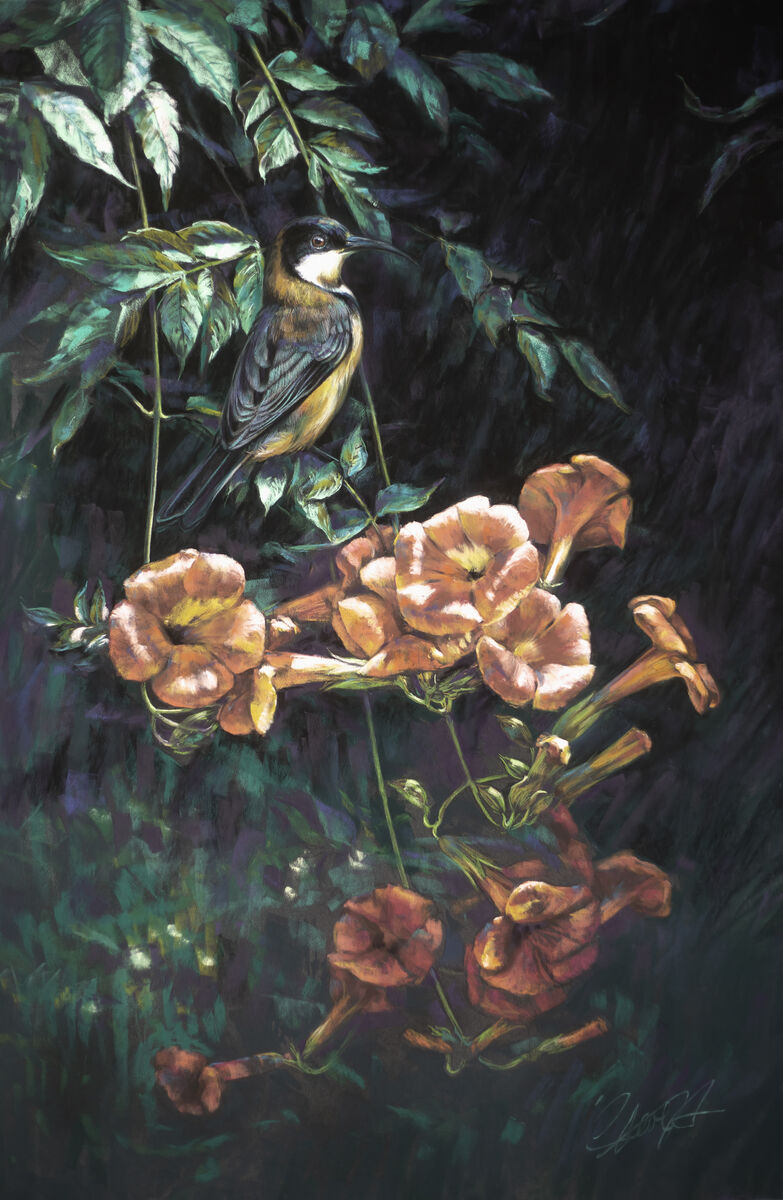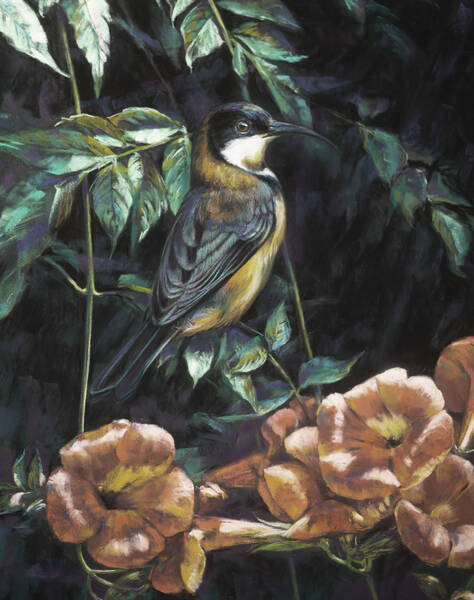Dancing through the light - Eastern spinebill
Pastel on Pastelmat paper
Original Image 50 x 75 cm
One of the constant joys of living in such a glorious national park is the constant presence of many different and wonderful bird species. One species which is a lifelong favourite of mine is the Eastern spinebill....a petite little 11 gram jet fighter of a honeyeater which weaves in and around our flowering plants almost faster than my eye can follow. With a long sharp beak the spiny is well able to shortcut the traditional honeyeater method of poking your head way down inside the trumpet shaped flowers of our Tecoma creepers.....instead simply punching a hole straight through the side to the nectar at the base of the trumpet. When feeding on flower nectar, eastern spinebills sing a piping territorial song to defend the flower. They raise feathers on their throat and crown and flick their tails 2 to 3 times per second if they feel threatened or when they are ready to fight
Eastern spinebills often produce high-pitched, rapid "pip, pip, pip" vocalizations. During courtship, pairs perform dazzling flight displays in which the male flies behind the female and they chase in an undulating motion. To initiate this courtship flight, a male will touch his beak to a female's tail. Eastern spinebills also perform broken-wing, distraction displays when their nestlings are threatened. Like all birds, eastern spinebills perceive their environment through audio, visual, tactile, and chemical stimuli. (Higgins, et al., 2001)
Like all honeyeaters, eastern spinebills are very effective pollinators for nectar-producing plant species. While feeding on nectar, their heads often brush against the flower and collect pollen which is then transferred to the next flower they feed on. Due to their specialized bills, eastern spinebills forage from a limited group of flowering species, therefore reducing the amount of cross-pollination and resulting in very effective pollination. During winter or low nectar resources, eastern spinebills also prey on insects and likely impact their populations as well.
I hope you enjoy this pastel painting inspired by our spinebills in the garden. To learn more about our honeyeaters go to https://birdlife.org.au/



